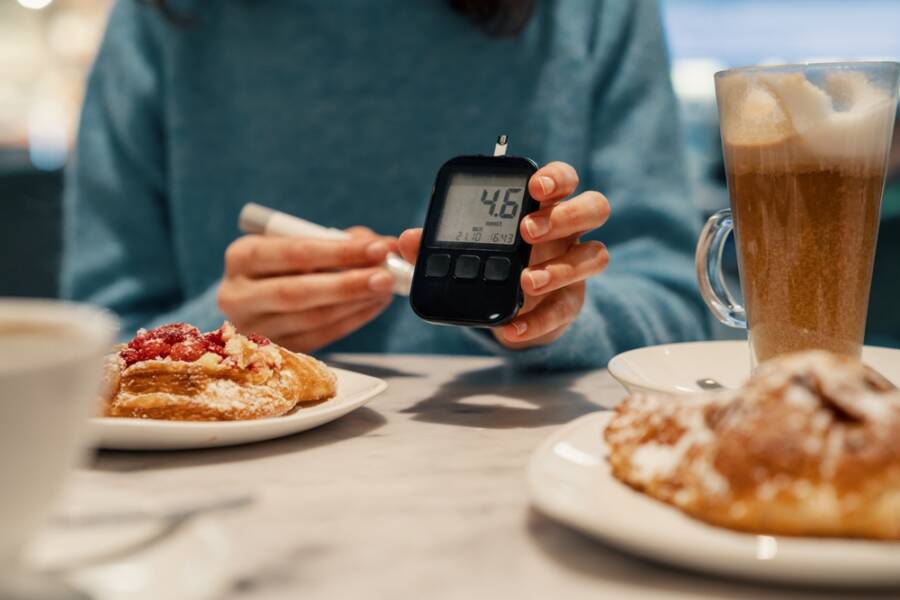Having belly fat can lead to serious health issues!
We see everywhere, all over the internet, that belly fat is so hard to get rid of, and only by strict diets and a rigorous gym schedule can you actually achieve good results. In reality, besides being not pleasant to the eye, having belly fat also leads to serious health risks.
Talking from a medical point of view, belly fat is called visceral fat, which usually wraps around organs in the belly. The most targeted organs are the stomach, the liver, and the intestines. Visceral fat helps protect your organs, so having some of it is healthy—but too much is bad. It increases the chance of developing conditions including diabetes, heart disease, and stroke.
Now, if we made you curious and want more insight into this topic, continue reading the following lines and discover the major health risks of belly fat.

Cancer
This may seem new to the public, but according to recent research, visceral fat accumulation in postmenopausal women virtually doubles their risk of colon cancer. In the same direction, another test discovered that individuals with waist sizes larger than 35 inches who dropped 12 pounds saw modifications in breast cancer biomarkers, such as inflammatory proteins, leptin, and estrogen, suggesting a decreased risk of breast cancer.
Heart disease
Another health risk of having belly fat is heart disease. Research has indicated a connection between heart disease and visceral fat. According to one study, women who had the largest waists about their hip sizes had double the risk of developing heart disease.
A 2-inch increase in waist circumference was associated with a 10% increase in the risk of heart disease for otherwise healthy nonsmoking women. Yet, the majority of research doesn’t actually analyze visceral fat.
Even if your abdominal fat isn’t substantial, it’s still recommended to have an annual checkup to check your heart’s health.
Stroke
Studies have indicated that those with higher levels of visceral fat have a higher risk of stroke; however, the exact causes are still unknown. Additionally, having visceral fat increases the chance of getting a stroke earlier in life, before the age of 40.
It’s mandatory to stay in touch with your doctor so they can guide you through a better diet and everyday schedule that fits your needs and helps you lose weight at a slower and healthier pace.
Insulin resistance and type 2 diabetes
Having more visceral fat than normal can lead to insulin resistance and later to type 2 diabetes. The development of type 2 diabetes and elevated blood sugar levels may result from this resistance, which pushes the pancreas to generate more insulin over time. The extra visceral fat interferes with normal metabolic processes by influencing the liver’s ability to process insulin and glucose.
Even if a person’s overall weight appears to be normal or just a bit higher than normal, they are more likely to acquire diabetes if they have visible belly fat.
Fatty liver disease
When you hear fatty liver disease, you probably think of a condition developed by those who drink alcohol regularly. Simple fatty liver is characterized by liver fat but little to no inflammation or damage to the liver’s cells. Usually, a simple fatty liver does not progress to the point of causing problems or damage to the liver.
However, this condition, also called nonalcoholic steatohepatitis, is characterized by inflammation, damage to liver cells, and accumulation of fat in the liver. Liver fibrosis, or scarring, can be brought on by inflammation and injury to the liver’s cells. Hepatic cancer or cirrhosis might result from this illness. Individuals with higher levels of visceral fat, hypertension, or excess blood fat are the most susceptible to this condition.
Are you looking to jumpstart your active life but you’re a beginner? No worries! With these dumbbell hand weights available on Amazon for $9.99, you can do simple exercises without putting too much pressure on yourself or your arms because they’re super light. If these are too light, you can browse for a heavier one, but at a higher price.

Dementia
According to medical research in California, those in their early 40s who had high levels of visceral fat had a three greater chance of dementia 30 to 40 years later compared to those who had the lowest level of abdominal fat at the same time. Furthermore, having belly fat it is also tied to brain changes that lead to Alzheimer’s disease.
Sleep apnea and respiratory issues
Having trouble sleeping and snoring quite a few times during the night is a common thing for people who have high amounts of visceral fat. This is because having too much fat around the chest and the abdomen puts pressure on the respiratory system, which narrows the airway and makes it very hard to breathe.
Sleep apnea raises the risk of metabolic problems and cardiovascular illness, causes poor-quality sleep, and causes weariness throughout the day. Furthermore, visceral fat makes illnesses like asthma worse and lowers lung capacity.
Asthma
This may come as a surprise too, but according to various studies made on women ranging from 40 up to 60 who had higher amounts of visceral fat had a 37% increased risk of developing asthma compared to those who had lower levels of fat. This is likely due to the inflammatory effects of visceral fat on the body especially on the respiratory tract.
Can we “combat” belly fat?
Well, long story short: everyone is genetically predisposed to belly fat, only that some of us are luckier than others and store fat differently or get rid of it faster. For instance, women tend to have more fat around their thighs and hips, whereas males typically gain more fat around their abdomen. Thankfully, you may reduce the fat surrounding your belly by changing your lifestyle.
Dieting is the primary aspect that works like a magic wand for fat loss, as you are already aware. It is crucial to eat enough fiber and protein, avoid processed foods, and limit sugar intake. Even if it’s impossible to reduce fat in specific body areas of the body and diets will result in weight loss over your entire body, leading an active lifestyle helps a lot in your journey of weight loss. That being said, it is a myth that doing 100 sit-ups a day, six days a week, would make your belly fat go away.
It’s not mandatory to go to the gym and do heavy lifting, or run marathons to move your body a bit more than usual. If you start let’s say walking 7,000 steps per day attempt to increase the number to 8,000 steps a day. If walking isn’t possible, then do some bodyweight exercises for around 30 minutes 4 or 5 times a week.
Furthermore, be mindful of your sleeping schedule and try to get the right amount of deep sleep hours per night. This is because, based on various studies, all the people who got a minimum of 6 hours of sleep per night have less visceral fat. Of course, if you’re worried that your body has more fat than it should and your health might be at risk, schedule a meeting with your doctor. By doing certain tests, you will also know if you are at risk for heart disease or type 2 diabetes.
Take care of yourself and make health a priority!
You may also be interested in checking out: 7 Shocking Ways Daylight Saving Time Affects Your Body.













